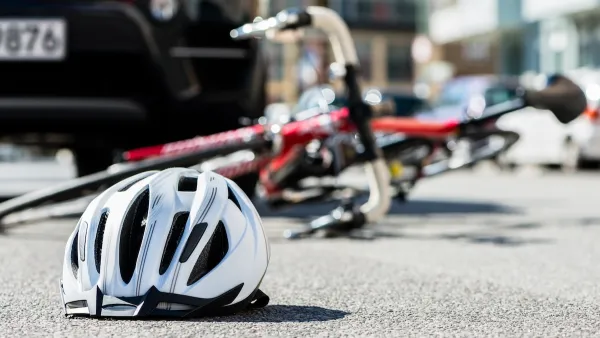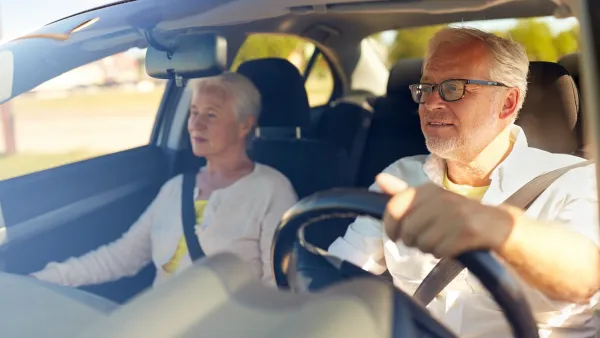Forget congestion pricing and higher gas taxes -- accurately priced pay-as-you-go auto insurance might be the best financial incentive tool for encouraging people to change their driving habits.
"Americans drive too much. This isn't a political or moral argument; it's an economic one..."
"[W]ith roughly three trillion miles driven each year producing more than $300 billion in externality costs, drivers should probably be taxed at least an extra 10 cents per mile if we want them to pay the full societal cost of their driving.
How can this be achieved? Higher tolls, especially variable tolls like congestion pricing, are one option. This seems to have worked well in London but was recently quashed in New York City, where the political hurdles proved too high.
A higher gas tax might also work. If a typical car gets 20 miles to the gallon, then the proper tax would be about $2 per gallon. But with the current high market price for gas and the political hysterics attached to it - well, good luck with that one.
This brings us to automobile insurance. While economists may argue that gas is poorly priced, that imbalance can't compare with how poorly insurance is priced."
"Aaron Edlin first noticed this imbalance more than 15 years ago. "I was a graduate student at Stanford," he says, "and I drove maybe 2,000 miles a year. But I paid roughly the same $1,000 as if I'd driven 10 times as much, which was a huge portion of my budget." A few years later, Edlin was serving on the President's Council of Economic Advisers when he floated an idea that economists had long found attractive: pay-as-you-drive (PAYD) insurance. It seemed like an obvious solution. Since no one expects to pay the same price for, say, a 60-minute massage as they pay for a 15-minute massage, why should people pay the same for insurance no matter how many miles they drove?
"The objection within the White House," Edlin recalls, "was there wasn't good academic research on the subject."
Edlin and a few others, including Jason Bordoff and Pascal Noel at the Brookings Institution, have since done such research. It makes a compelling case that PAYD insurance would work well, reducing the carbon emissions, congestion and accident risk created by too much driving while leading drivers to pay the true cost of their mileage. Bordoff and Noel put the total social benefit at $52 billion a year."
FULL STORY: Not-So-Free Ride

Planetizen Federal Action Tracker
A weekly monitor of how Trump’s orders and actions are impacting planners and planning in America.

Restaurant Patios Were a Pandemic Win — Why Were They so Hard to Keep?
Social distancing requirements and changes in travel patterns prompted cities to pilot new uses for street and sidewalk space. Then it got complicated.

Map: Where Senate Republicans Want to Sell Your Public Lands
For public land advocates, the Senate Republicans’ proposal to sell millions of acres of public land in the West is “the biggest fight of their careers.”

Maui's Vacation Rental Debate Turns Ugly
Verbal attacks, misinformation campaigns and fistfights plague a high-stakes debate to convert thousands of vacation rentals into long-term housing.

San Francisco Suspends Traffic Calming Amidst Record Deaths
Citing “a challenging fiscal landscape,” the city will cease the program on the heels of 42 traffic deaths, including 24 pedestrians.

California Homeless Arrests, Citations Spike After Ruling
An investigation reveals that anti-homeless actions increased up to 500% after Grants Pass v. Johnson — even in cities claiming no policy change.
Urban Design for Planners 1: Software Tools
This six-course series explores essential urban design concepts using open source software and equips planners with the tools they need to participate fully in the urban design process.
Planning for Universal Design
Learn the tools for implementing Universal Design in planning regulations.
Heyer Gruel & Associates PA
JM Goldson LLC
Custer County Colorado
City of Camden Redevelopment Agency
City of Astoria
Transportation Research & Education Center (TREC) at Portland State University
Camden Redevelopment Agency
City of Claremont
Municipality of Princeton (NJ)





























